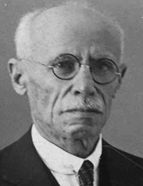

In Brazil, the cultural debates were different but no less heated: for example, the discussion on the territorial division of Brazil, the criticism of national and foreign historiography on the history of Brazil and the appreciation given to the works of Robert Southey and Councillor Pereira da Silva; or the controversy and stalemate that led to the discussion of a proposal to hold ‘a Universal Exhibition commemorating the discovery of Brazil’ in Rio de Janeiro in 1900.
In the Brazilian community , there was a growing awareness of the nation, which had gained independence, established itself as an empire and, at the end of the 19 th century, adopted a republican political form. This is how we can understand José Honório Rodrigues ’ comment about the historiographical debates in Brazil, which represented an opportunity for Lúcio de Azevedo and his contemporary Brazilian historians to get to know each other. A new circle of friendship was formed that would last throughout his life: Oliveira Lima and Capistrano de Abreu, two of the prestigious Brazilian historians whose works Lúcio de Azevedo would later present and praise. He was also accepted as a corresponding member of the Instituto Histórico e Geográfico de S. Paulo [Historical and Geographic Institute of S.Paulo] (1909) and the Instituto Arqueológico e Geográfico Pernambucano [Archaeological and Geographic Institute of Pernambuco] (1915).
The second period of his life lasted until 1921 and was marked by major historical studies. To begin with, Os Jesuítas no Grão Pará [The Jesuits in Grão Pará] ( 1901 ) , O Marquês de Pombal e a sua época [The Marquis of Pombal and his time] ( 1909 ) , the works on Father António Vieira, the first of which was published in 1912; the first article on Sebastianism ( 1916 ) , on Bandarra ( 1917 ) ; and, in 1921, the História dos Cristãos Novos Portugueses [History of the Portuguese New Christians] . This period took place mainly in Lisbon, where he continued his documentary research in the libraries and archives of Lisbon, Coimbra , and Évora. During this phase, Lúcio de Azevedo reaffirmed a critical vision based on documents and, with regard to his predecessors, only praised the academic Francisco Luís Gomes , who had expressed an identical attitude in Le Marquis de Pombal, esquisse de sa vie politique [The Marquis de Pombal, sketch of his political life] (1869), a work that he considered ‘in every respect remarkable, and the first worthy of H istory that has been written on the subject’. In this respect, he declared that he wanted to ‘distance himself from the controversy, consult the documents at the source, listen to witnesses, especially those whose accounts are not intended to be made public’. H e chooses Pombal ’ s public life as the basis for his enquiry, starting by studying the embassy to London and then to Vienna and the entry into the reign of D. José, the court and the factions, the earthquake and the attempt on the king ’ s life, the international relations framework in the Seven Years ’ War, the Jesuit issue, ending with the pages dedicated to the apogee, the decline and the ‘ end ’ .
This work is financed by national funds through FCT - Foundation for Science and Technology, I.P, in the scope of the projects UIDB/04311/2020 and UIDP/04311/2020.
